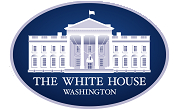Trade Cases

Biden Officially Implements EU TRQ, Eases S232 on Steel from Europe
Written by Michael Cowden
January 2, 2022
U.S. President Joe Biden has officially implemented a tariff-rate quota (TRQ) that will ease Section 232 restrictions on steel from the European Union.
“I have determined that specified volumes of eligible steel … imports from the EU will no longer threaten to impair the national security,” Biden wrote in a presidential proclamation.
![]() The president did not extend a similar deal to other nations. “I have determined that it is necessary and appropriate, at this time, to maintain the current levels as it applies to other countries,” he wrote in the proclamation, which is dated Dec. 27 and which you can find here.
The president did not extend a similar deal to other nations. “I have determined that it is necessary and appropriate, at this time, to maintain the current levels as it applies to other countries,” he wrote in the proclamation, which is dated Dec. 27 and which you can find here.
Japan and Great Britain are seeking deals like those negotiated with the EU. And South Korea, which agreed to a hard quota in exchange for exemption from Section 232 tariffs, also seeks a better deal with the U.S.
Recall that Section 232 tariffs – 25% in the case of steel imports and 10% for aluminum imports – were applied to most countries, including those in the EU, by the Trump administration in 2018.
The Biden administration in late October agreed to a TRQ, or soft quota, with Brussels that would allow 3.6 million short tons (3.3 million metric tonnes) to be imported from the EU tariff free. Any volumes over that amount remain subject to the U.S. national security tariff.
One important caveat: European steel is exempt from the 25% tariff only if it is melted and poured in the EU. That means steel rolled from slab or billet melted outside the region remains subject to Section 232 tariffs.
The new deal with the EU will remain in place through Dec. 31, 2023. But Biden said his administration would revisit the deal if necessary.
Note that U.S. presidents are limited in most matters by Congress and the courts. But in issues of international trade, the executive branch has broad power to act unilaterally.
Lobbying groups for the domestic steel industry cautiously cheered the implementation of the EU TRQ.
“We are particularly gratified that the president’s proclamation emphasizes that only steel melted and poured in the EU will benefit from this alternative arrangement,” American Iron and Steel Institute (AISI) President Kevin Dempsey said in a statement.
But enforcement will be critical given rising imports and falling domestic capacity utilization.
“Proper implementation and enforcement of the TRQ will be crucial to preventing another steel import surge that would undermine our industry,” Dempsey said.
The melted-and-poured language, previously a feature of domestic policy, is aimed at limiting transshipment and reducing carbon emissions, Biden’s proclamation said.
And the U.S. steel industry has a good story to tell on the carbon front, Steel Manufacturers Association (SMA) President Philip K. Bell said.
“American steelmakers lead the way by producing the lowest carbon intensity steel in the world (and) by being global leaders in recycling and electric furnace steel production,” Bell said.
“It is our sincere hope that this agreement will incentivize other countries to take a market-oriented approach to steel trade and sustainable steelmaking,” he added.
By Michael Cowden, Michael@SteelMarketUpdate.com

Michael Cowden
Read more from Michael CowdenLatest in Trade Cases

US pols urge ‘domestically owned’ steel industry
US Sen. Jim Banks (R-Ohio) and Rep. Frank Mrvan (D-Ind.) have written a letter in support of a “domestically owned and operated American steel industry” being vital to national security.

Leibowitz: Trump takes aim at trade with a tariff ‘punt gun’
The tariffs are intended to produce more investment and jobs in US manufacturing. But first, there will be a cosmic change, potentially wiping out millions of jobs in the short run. While administration officials will no doubt cringe at the comparison, it reminds me of the effort to undercut fossil fuels production to address climate change. Led by Democrats, the effort was to destroy fossil fuels so that renewable energy sources would have more space to grow. The result: inflation and electoral defeat in 2024.

Price: Expect new trade shocks as Trump’s ‘reciprocal’ tariff negotiations continue
President Trump cast a wide net with the proposed, reciprocal tariffs. The negotiating stage will be critical to determining the success of his strategy. And for those suffering tariff whiplash, don’t expect the pace of change to slow down just because the reciprocal tariffs are entering a negotiating phase.

SMU Survey: Less support seen for Trump tariff policies
Meanwhile, an increasing number think it's too early to say whether the penalties are going to bring more manufacturing to the US.

CRU: USW seeks exclusion for Canada from Trump’s tariffs
The union is also urging stronger enforcement against countries such as China which break trade rules, and a coordinated Canada-US strategy to protect union jobs across the North America
